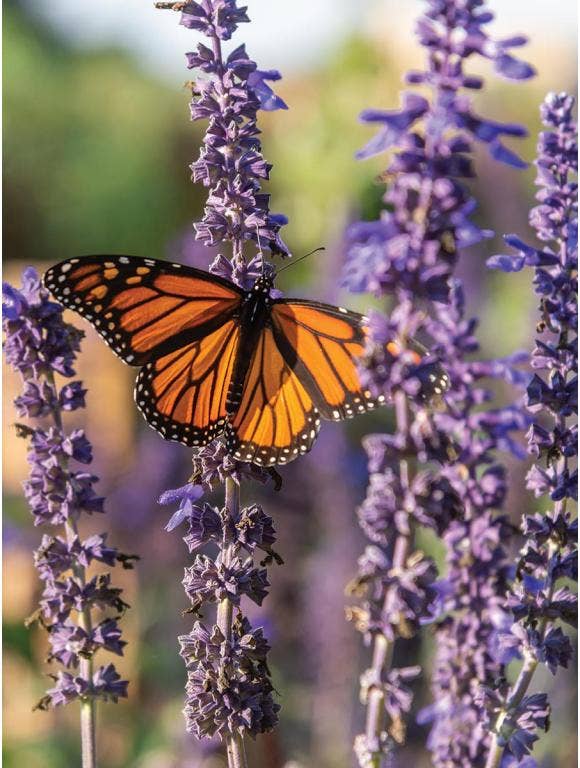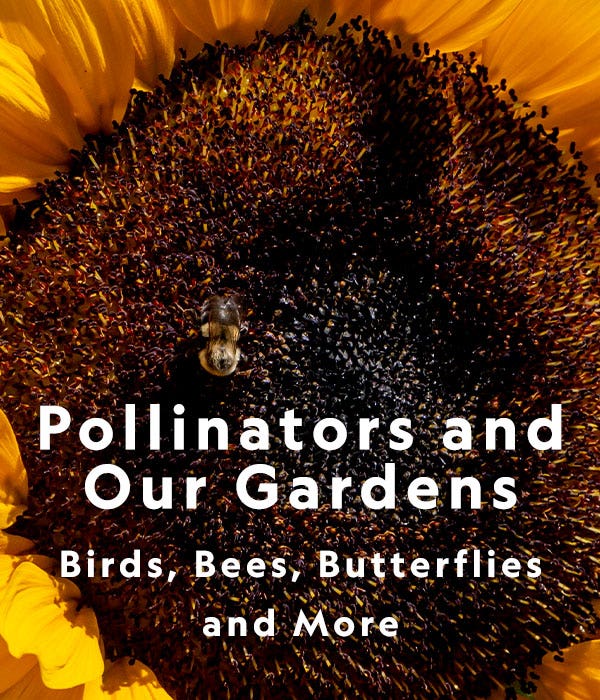


There is a crisis in the pollinator populations - it is not just the bees that are dying at an alarming rate, the population crisis is affecting all pollinators. Bees, bats, birds and butterflies have all seen a dramatic reduction in their populations over the past few decades. Healthy habitat for these important creatures has been adversely affected by farming practices, urbanization and widespread pesticide use. You can help reverse those declining numbers by making a pollinator friendly garden that can help the insects survive in both rural and urban areas. Pollinator gardens are colorful, attractive and bursting with life all summer long and easy to install.
Pollinators are crucial if you are growing vegetables, because if you grow vegetables like summer squash, for instance, you will know that pollination is the key to getting good fruit set. Not only do the squash pollinators have to transfer the pollen from the male flower to the female flower but they need to do that multiple times. Missouri Botanical Garden estimates that it takes about 15 visits from a bee to fully pollinate the female squash flower. Many fruit trees and bushes also rely on pollen being taken from one tree or bush to another so attracting pollinators to your garden is vital if you want a good harvest from your fruit and vegetables.
The bugs that pollinate our garden range in size and mode of travel – some fly, others crawl along the ground or are carried around on the hide of other animals. Bees are the most common pollinators but birds, beetles and butterflies also play a role so a garden that is attractive to pollinators has to be attractive to a wide range of insects. Color and form of the flower dictate who will come to visit – a bright red zinnia will attract one insect whereas another insect prefers to walk into the longer flower tube of alliums. When you add in flowers for early and late pollinators, your garden will not only be great for the insect population but will also be colorful and aesthetic to look at all season long. For a healthy pollination population to survive it requires food, moisture and shelter:
Food is the nectar or pollen of the plant.
Shop Pollinators
Water can be found in several ways – rainwater, damp stones or gravel after you have watered, damp leaves from dew in the summer, bird baths and fountains in water gardens all provide necessary water. Natural streams and ponds work well too particularly for providing water for birds.
Shelter from storms and predators comes from nearby shrubs and bushy perennials.
Many bees and insects also need some open ground areas for nesting and butterflies particularly need some plants to be sacrificed for their caterpillars to eat.
There are many flowers out there that work well for attracting and nourishing pollinators so you can find flowers that grow well in full sun as well as more shady places. Plant the flowers in groups so that bees, particularly those that target just one flower, can get lots of pollen without expending a lot of energy when visiting one flower and the next. Grouping 3 or 5 plants together more visually appealing in the landscape too.
Early season pollinator plants: Pollinators coming out of dormancy need nourishment early in the year and there is not usually very much in the native landscape available to them. Chives, and other early blooming alliums are perfect for early season pollen. Hellebores, crocus and many daffodils are also good for late winter/early spring foraging.
Late spring into early summer: The number of plants available that bloom at this time gives lots of varieties, so pick what works for you. Good options include lavender, catmint, violas, phlox, poppies and blueberries. For more shady areas try astilbe, columbine and hydrangeas.
As the summer progresses the options increase even more and include edibles as well as ornamental blooms in the garden. Borage, raspberries and summer vegetables all provide pollen for insects. In the flower garden zinnias, salvias, sunflowers, Echinacea, monarda, cleomes and cosmos are all colorful and varied which provide nutrients for a wide variety of insects.
By the end of summer the garden is slowing down and many pollinators are preparing for winter. Late season pollen can be the difference between life and death for some of these insects particularly if their shelter is disrupted during fall cleanup of the garden. Late season solidago makes a great addition to your pollination garden along with sedum, rudbeckias and eupatorium.
By providing varied and colorful flowers all summer long you supplement what nature can provide for the pollinators enabling more to survive in the landscape and helping to restore natural populations.






















